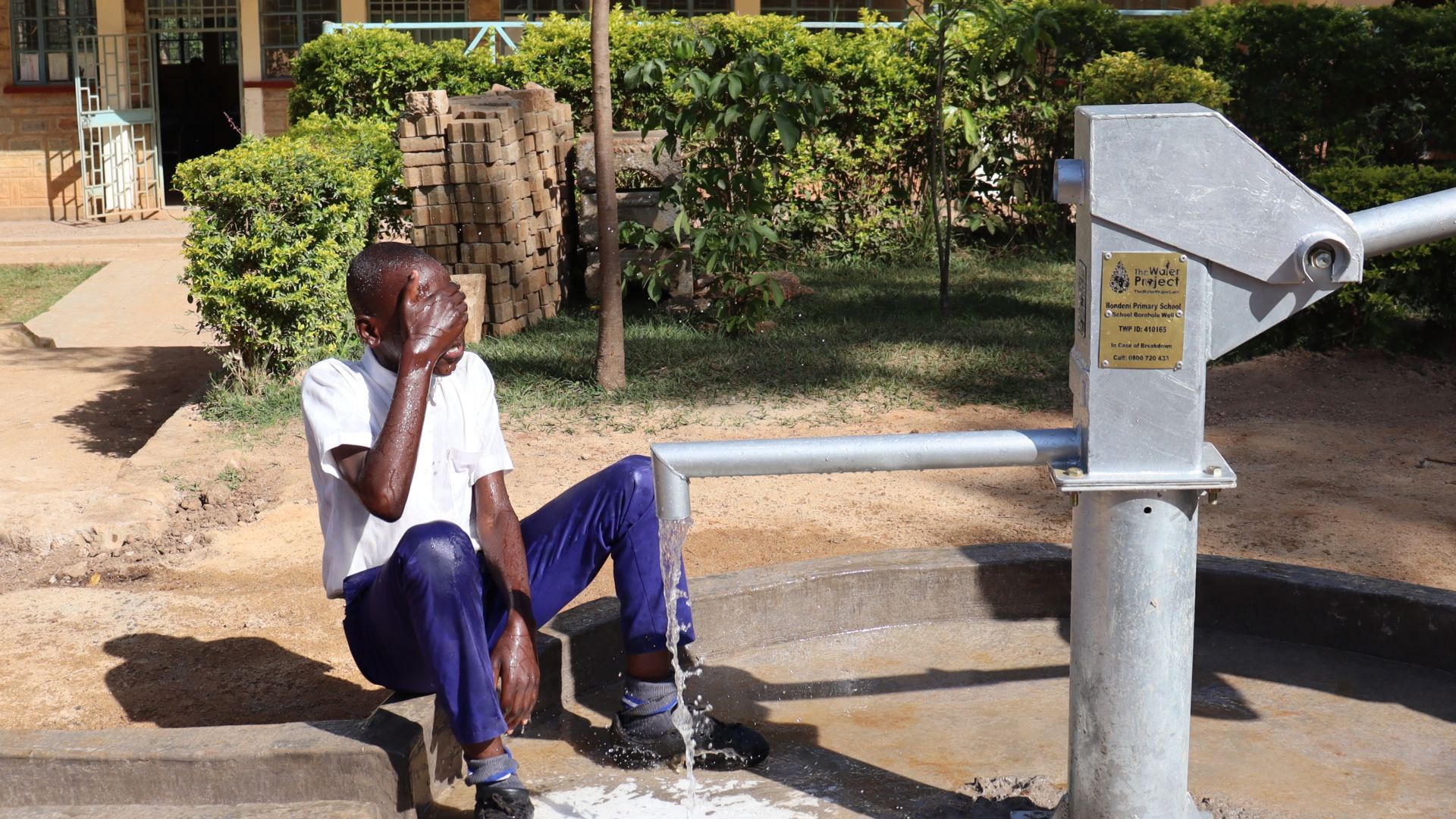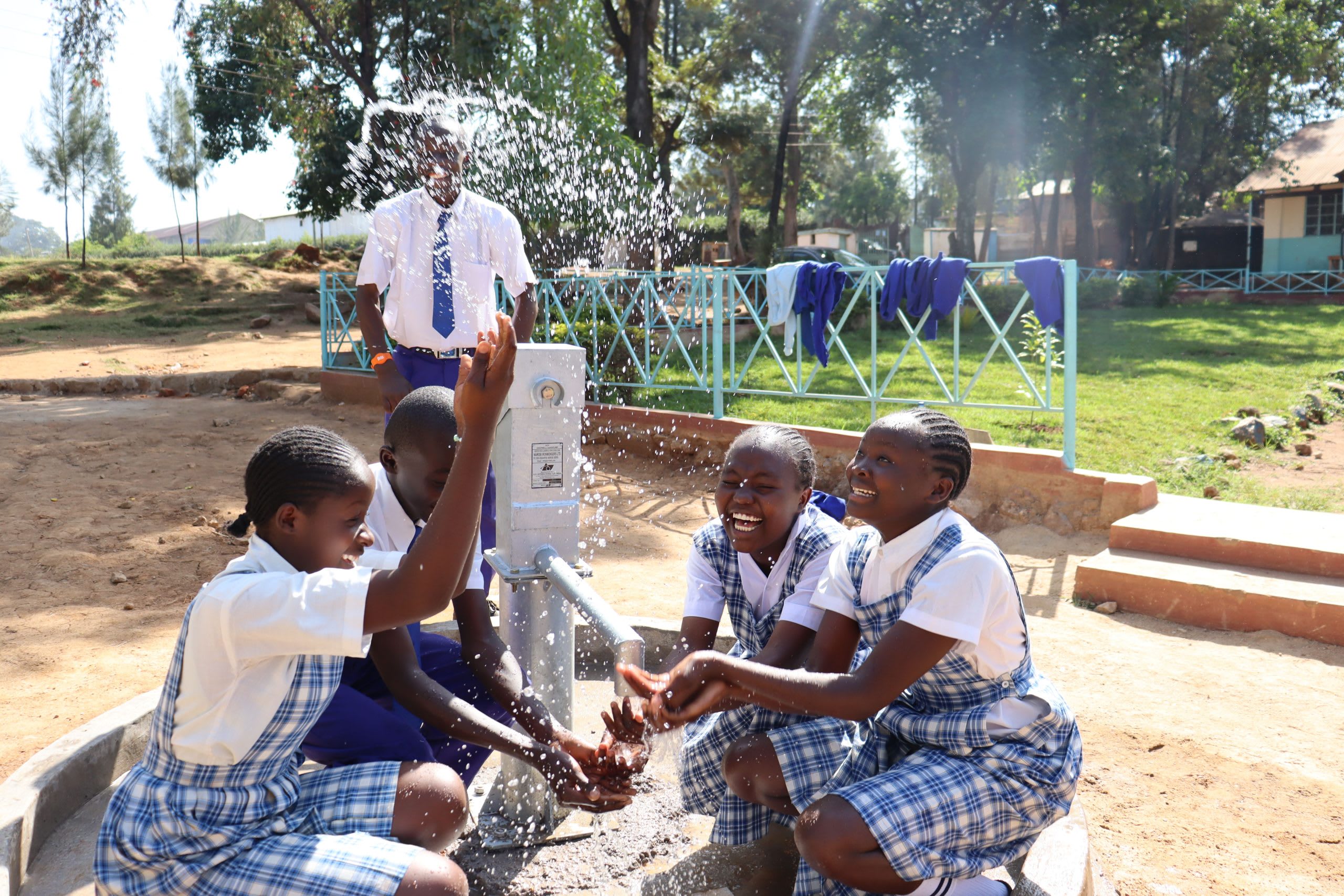At the Bondeni Primary School, the 572 students and 23 staff members face an uphill battle every day to find clean and safe water. Their rainwater tank is insufficient, and the only other option is a contaminated stream off campus. They risk their health and sacrifice their education daily.

Students carrying heavy water cans uphill back to school.
The Bondeni School has grown significantly since it first opened, as has their water need. The administration has tried to solve its water crisis, reaching out for help but to no avail. The water available to the students and staff from the rainwater tank and the stream far too regularly contributes to waterborne illnesses, such as typhoid. Getting sick consistently takes away precious time and resources, cutting into their future possibilities.

Students in class.
"Students waste a lot of time at the water points due to overcrowding instead of utilizing this time to focus on their studies. Students also scramble to fetch water and this could lead to potential injuries. The school is located in a slum; hence, there is much pollution of the stream, making it unsafe for use," shared Field Officer Rachel Obura.

Young students collect contaminated water from the stream.
The only way to avoid the repercussions of contaminated water is to source their water from home, which is also challenging and arduous.
Rebecca, 11, is all too familiar with the consequences of water-related illnesses, not only on her health but also on other aspects of her life.

Rebecca.
"The stream water should not be consumed because it has been exposed to various contaminants, making it unsafe for human consumption and potentially posing health risks," she said.
"I suffered from low appetite, which left me feeling weak and unable to eat. Additionally, I experienced stomach pains, fever, and diarrhea, which significantly impacted my overall health," Rebecca shared.
"I had to stay at home for nearly two weeks because I was feeling weak and in pain, making it difficult to focus on my schoolwork. I prioritized my recovery before returning to school to ensure I could fully concentrate and perform at my best," she continued.
When she gets sick, Rebecca knows that her parents don't have the resources to get her medical attention, so each bout of illness has long-term effects.

"My parents didn't have the means to take me to the hospital or buy medication; they did their best by managing my symptoms. They gave me warm salty water at short intervals to help alleviate my diarrhea and stomachache," Rebecca shared.
But Rebecca is resourceful. She has figured out a system to avoid as many contaminants as possible.
"I rarely get sick [now] because I always bring my own drinking water from home. We make sure it's safe to drink by boiling it beforehand. I prefer not to drink water from the school's rainwater tank because it's never cleaned, and I don't trust its quality," she shared.
"When I spend a lot of time getting water, I can't focus on my studies. Because of this, I struggle to make up for the lost time, and as a result, I sometimes fail exams," Rebecca said.

Students are on the hunt for water instead of being in class.
The school's water crisis consumes so much time and energy that it leaves little time for education or play, which are crucial to healthy development.
As resourceful as Rebecca is, the Bondeni Primary School needs a well on campus to provide easy access to safe water. Implementing a well can give students like Rebecca time to attend class and do their homework consistently. Teachers can provide their students with a better education instead of using time on water collection and related illnesses.

Students in class.
Rebecca has been thinking about her future however, unlike most kids her age, her goal is to solve the school's water crisis.
"I have several plans for the future; however, the one that takes precedence is creating a waterpoint that will serve my community, such that they won't have to travel long distances in search of clean, safe drinking water," she shared.

Students collect water from the rainwater tank, where the water is unsafe to consume.
"Clean and safe water is essential in any given community. As a community, we need to strive to have clean and safe water for drinking. Access to clean and safe water keeps water-related illnesses away," Rebecca concluded.
Steps Toward a Solution
Our technical experts worked with the local community to identify the most effective solution to their water crisis. They decided to drill a borehole well, construct a platform for the well, and attach a hand pump.
Well
Abundant water often lies just beneath our feet. Aquifers—natural underground rivers—flow through layers of sediment and rock, offering a constant supply of safe water. A borehole well is drilled deep into the earth to access this naturally filtered and protected water. We penetrate meters, sometimes even hundreds of meters, of soil, silt, rock, and more to reach the water underground. Once found, we construct a platform for the well and attach a hand pump. The community gains a safe, enclosed water source capable of providing approximately five gallons of water per minute. Learn more here!
Handwashing Stations
Alongside each water source, we install two gravity-fed handwashing stations, enabling everyone at the school to wash their hands. Handwashing is crucial for preventing water-related illnesses within the school and community. Student “health clubs” maintain the stations, fill them with water, and supply them with soap, which we often teach them how to make.
Latrines
We will construct two Ventilated Improved Pit (VIP) latrine blocks designed to prevent fecal disease transmission. Each latrine features a cement floor, making it easy to use and clean regularly. Three stalls will serve the girls, and three will serve the boys.
School Education & Ownership
Hygiene and sanitation training are integral to our water projects. Training is tailored to each school's specific needs and includes key topics such as proper water handling, improved hygiene practices, disease transmission prevention, and care of the new water point.
To ensure a lasting impact, we support forming a student health club composed of elected student representatives and a teacher. These clubs promote hygiene practices schoolwide and keep handwashing stations well-stocked. This student-led model encourages a sense of ownership and responsibility.
Safe water and improved hygiene habits foster a healthier future for everyone in the school and the surrounding community.

 Borehole Well and Hand Pump
Borehole Well and Hand Pump
 Rehabilitation Project
Rehabilitation Project
































